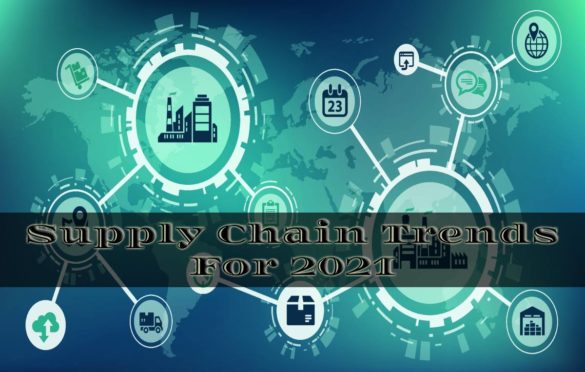
Supply Chain Trends For 2024
Technology evolves and that evolution brings with it innovation. With global businesses a part of most products we buy, the supply chain for product manufacturing becomes ever more crucial—and a fruitful place for technological advancements that go far beyond what we could have imagined even a few years ago. With the New Year upon us, let’s take a closer look at some of the new trends that can have a positive impact on how we get products to market.
Table of Contents
Blockchain
Tech companies continue to promote the effectiveness of blockchain solutions in the supply chain world. On paper, it makes a great deal of common sense. Essentially, blockchain technology provides a strong level of traceability. When used as part of a supply chain, blockchain enables additional transparency and accurate end-to-end tracking of items traveling from Point A to Point D and beyond. When physical assets are digitized, blockchain produces a decentralized immutable record of all activity ranging from transactions to work orders and all other trails of activity. With this type of technology in place, companies of all sizes have a solid means to track and follow assets from production to delivery to the end-user. Blockchain technology is used in the cryptocurrency world because it provides an extremely high level of security and accountability. These factors make it an attractive addition to the supply chain process.
AI/ML (Artificial Intelligence/Machine Learning)
AI and ML permit companies to utilize huge amounts of historical data, combined with current real-time data, and sort through it to identify patterns or details that may be useful in identifying trends or predicting potential outcomes, drastically cutting down on the time it previously took to crunch numbers. AI can handle projects that previously took humans days, months, and years to complete. Project calendars are used to determine the resource availability, how resources that are assigned to tasks are scheduled. The computers that gather and learn the data can complete tasks in a fraction of the time that would otherwise be required. The healthcare industry is using AI/ML technology incredibly effectively, as new vaccines show. With data from clinical trials, this technology now assists in the creation of new drugs and medications, speeding up when they can be made available in the supply chain. It is fair to say that machine learning has likely been part of the developmental phase of COVID vaccines and greatly reduced the time required in traditional clinical trial settings.
Robotics
Robotics have been with us for some time, so it isn’t exactly new technology. However, with new applications in the supply chain, robotics can new ways to streamline how assets are moved around. Robotic Automated Storage/Retrieval is essentially a form of automation used to get goods to consumers. These robotic shuttle systems are far more efficient than human in storing products in warehouses and retrieving items faster. Although this type of robotic system replaces humans, it still relies on humans to input the data required for the proper processing of inventory. However, with the potential for high storage density and quicker retrieval times, robotics brings a lot of positives to the supply chain process.
Data Loggers
Data loggers are a form of technology that also has been used for some time. However, their use in supply chain scenarios continues to increase. A data logger is a small metal box whose sensors observe and record such conditions as temperature, humidity, and pressure. The data logger can effectively do this in settings whose conditions are too harsh for humans or that require constant monitoring. Some data loggers send alerts when conditions fall outside an acceptable range, enabling early human intervention to correct environmental issues. They are easy to set up and control remotely from smartphones, tablets, and laptops, making these devices very popular. Data loggers are most effective in helping to maintain proper conditions for the transportation and storage of sensitive assets. Data loggers are the primary means of monitoring factors like humidity and temperature when distributing sensitive assets. Dickson has a good explanation here.
Next-Gen Control Towers
These control towers have nothing to do with air travel. Rather, we’re talking about a system where a cross-functional, end-to-end digital twin of the supply chain is created. This permits visibility on how activities that take place throughout the extended supply chain can impact the ability to get goods to consumers. The digital twin models all current limitations in the transportation, warehousing, and production phases that make up the supply chain. With data collected from these sources, the next-gen control tower can create plans to best optimize situations as they occur. In other words, you have a backup plan that continues to evolve as the goods move through the supply chain. And with the assistance of AI and ML, this new means of monitoring the entire supply chain permits damage control in ways that have never been possible in the past. With a focus on efficiency, this form of automation modeling assists in keeping costs down while still pushing assets through the system, and not always faster, but with more effective methods to ensure delivery with fewer incidents.
In Conclusion
Thanks to technology, distributing products to end-users has become streamlined. With innovations such as automation, tools that provide better tracking, monitoring devices, and more secure means of tracking inventory, consumers are better served. Trends to watch for in the New Year are a continuation of those that picked up momentum in 2020 and are becoming more commonplace as a result. Technology will continue to play a role in the future of supply chains, and this is just the beginning of what is possible using the technology that is available to us today. Imagine what will be possible in the future.



